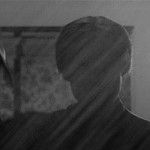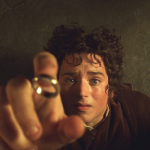Inherent Vice Review
A stoner private dick, his manipulative ex-old-lady, her millionaire land developer lover, his scheming wife, her ripped kept man. A recovering dope fiend single mother, her missing snitch boyfriend, a black panther, a gang of Nazis, an maniacal actor cop, a maritime lawyer, a pot-smoking assistant DA, nose-picking FBI agents, and a cabal of evil dentists.
These are just some of the insane characters populating the world of Paul Thomas Anderson’s latest film, Inherent Vice. What is it about? Ummm… Let’s put it this way, when one character asks what inherent vice is, another responds very appropriately: “I don’t know.”
Nor do I, but I’m going to try nonetheless. It’s 1970, and Larry “Doc” Sportello (Joaquin Phoenix) is the P.I. He’s approached by his ex, Shatsa Fay Hepworth (Katherine Waterston) to look into a plot by her lover Mickey Wolfmann’s (Eric Roberts) wife to ship him off to a “loony bin” and abscond with his sizeable fortune, which was made by wrecking Los Angeles neighborhoods and erecting massive, cheap housing complexes. During the initial stages of Doc’s drug-addled investigation, Shasta disappears. It gets weirder.
Doc is also approached by a Tariq Khalil (Michael K. Williams), who wants our hero to track down a neo-Nazi named Glenn Charlock, who owes Tariq some money. Charlock has a connection to the aforementioned Wolfman—a connection that seems awfully nefarious when Charlock ends up dead outside a Wolfmann lot, and Doc is knocked unconcious and framed for his murder. Lt. Det. Christian “Bigfoot” Bjornsen (Josh Brolin) is a former hippie turned straight man who wants nothing more than to send Doc up the river, but the case is full of holes and he’s cut loose. But Doc continues to track Wolfmann, as does Bigfoot (but via Doc), and all signs point to a heroin syndicate known as the Golden Fang…at least I think.
There’s also the case of Coy Harlingen (Owen Wilson), whose wife Hope (Jena Malone) approaches Doc when Coy goes missing, presumed dead, but it’s connection to the “main thread” doesn’t reveal itself until later on into the film. That said, you definitely shouldn’t go into Inherent Vice trying to connect the dots. The dots don’t connect. (What is a dot if not an alignment of Neptune and Jupiter under a nebula’s gaze, I mean, right?) Instead, let the madness wash over you like one of the many, many, MANY clouds of cannibis smoke that wash over Doc in the film.
But it’s easy enough to get lost in the characters’ relationships, not to mention the film’s many sight gags or Andersons’ predictably masterful control over his craft, that one might not notice this stoner detective comedy is among the most romantic films of the year (and quite possibly the most romantic movie in a filmography that includes Punch-Drunk Love). Doc’s pensive, literally blue gaze that opens the film contrasts spectacularly (on physical and thematic levels) with the very next shot—a bright orange introduction to the beaming Shasta Fay. This is a man who doesn’t take much seriously, but when this woman brings him a problem, he listens. He puts himself in harms way, and for what: so she can help protect her rich lover from his conniving wife? And yes, Shasta is manipulating Doc—see her extended single-take monologue midway through the film, one of the film’s standout scenes—but theirs isn’t a one-sided romance. How else can you explain the longing they share for their Ouija-fueled run through the rain?
But that’s not the film’s only element of romance. Timing-wise, it takes place smack dab in the middle of the Charles Manson affair, and Inherent Vice‘s cops are hell-bent on stamping out the “dirty hippie lifestyle.” There’s genuine fear bubbling under the surface that Doc and his friends are losing their way of life. Those with power are increasingly seeing this culture as an obstacle for some reason, and they’re preying on those caught between both worlds to help stamp out their enemies. The way Inherent Vice is cut and scored and shot screams love and peace. It’s a film that takes its time, and it’s arguably the least showy film of Anderson’s career. Even the long takes are mostly static.
Acting-wise, Joaquin Phoenix owns the film and gives the best performance of his career. His reactions are what defines this character, as he’s clearly up to his elbows in weird-ass shit, but he’s either too confused, too afraid, or too stoned (probably a combination of all three) to wear that concern on his sleeve. So his reactions tell us everything we need to know about him and what he’s thinking—like when he screams at a picture or quietly, almost silently indicates his agreement with a client. Even his detective’s notebook is reactionary—he scribbles “Something Spanish” after a character discloses a key bit of information to him in another language. Conceiving of and executing a lead character in a film this way is admittedly strange, but it totally works.
Katherine Waterston is a revelation as Shasta Fay, and Owen Wilson and Josh Brolin, like Phoenix, have never been better. Anderson probably has been better, but that’s hardly a knock on Inherent Vice, which doesn’t quite reach the high highs of Boogie Nights and There Will Be Blood. But this is a top-tier film from a top-tier filmmaker, and sorry, The Grand Budapest Hotel and Interstellar, Doc Sportello and PTA just rolled you up and smoked you. Inherent Vice is 2014’s masterpiece.















